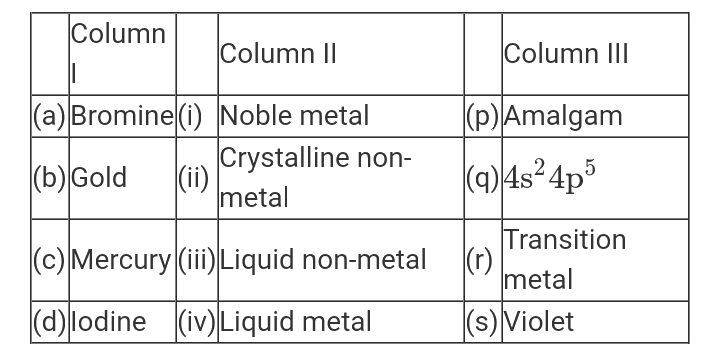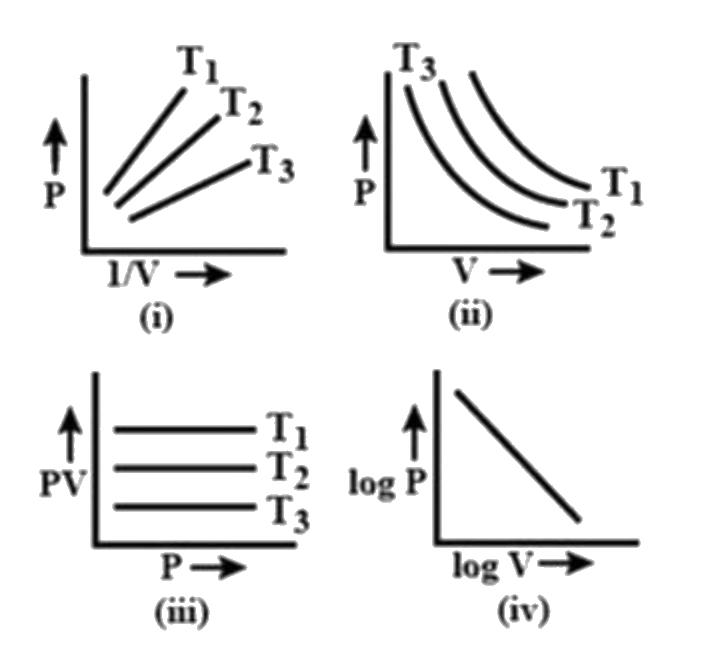Complete Solutions to CHEMISTRY of chapter NTA JEE MOCK TEST 62 of Class 12 book with complete answers and questions
| Class 12 | CHEMISTRY |
| Chapter | NTA JEE MOCK TEST 62 |
| NTA MOCK TEST | CHEMISTRY |
| Number Of Questions | 25 |
| Academic Year | 2023-24 |
In an experiment, 2.4 g of iron oxide on iron. In another experiment, 2.9 g of iron oxide gave 2.09 g of iron on reduction. Which law is ilustrated from the above data?
View SolutionEquivalent amounts of `H_(2)` and `I_(2)` are heated in a closed vessel till equilibrium is obtained. If `80%` of the hydrogen is converted to `HI`, the `K_(c)` at this temperature is
View SolutionWhich of the following statements is false?
View SolutionBy diluting a weak electrolyte, specific conductivity `(K_(c))` and equivalent conductivity `(lambda_(c))` change as -
View SolutionIdentify X and Y in the following reaction `BCl_(3)+NH_(4)Cl overset(140^(@)C//C_(6)H_(5)Cl)rarr X overset(NaBH_(4))rarr Y`
View SolutionThe following data were obtained during the first order thermal decomposition of `SO_(2)Cl_(2)` at a constant volume.
`SO_(2)Cl_(2(g))rarr SO_(2(g))+Cl_(2(g))`

What is the rate of reaction when total pressure of 0.65 atm?
View SolutionThe chemical composition of slag formed during the smelting process in the extraction of copper is :-
View SolutionBenzene carbaldehyde is reacted with concentrated NaOH solution, to give the products 'A' and 'B'. The prodcut 'B' is an aromatic hydroxy compounds where OH group in linked to `sp^(3)` hybridised carbon atom next to benzene ring. The products 'A' and 'B' are respectibvely:
View SolutionIdentify the correct pathway to convert propanoic acid to ethylamine. The reagent represented by A, B and C are
`CH_(3)CH_(2)COOH overset(A)rarr X overset(B)rarr Y overset(C )rarr CH_(2)CH_(2)NH_(2)`
View SolutionThe abstraction of proton will be fatest from which carbon in the following compound ?

View SolutionMost of the transition metals exhibit
(i) paramagnetic behaviour
(ii) diamagnetic behaciour
(iii) variable oxidation states
(iv) formation of coloured ions
View SolutionOn treatment of 10 ml of 1M solution of the complex `CrCl_(3).6H_(2)O` with excess of `AgNO_(3)`, 4.305 g of AgCl was obtained. The complex is
View SolutionMatch the columns I, II and III and mark the appropriate choice.

View SolutionGiven below are two reactions of water with sodium and carbon dioxide. What is the nature of water is these reactions?
(i) `2Na_2H_(2)Orarr 2NaOH+H_(2)`
(ii) `6CO_(2)+12H_(2)Orarr C_(6)H_(12)O_(6)+6H_(2)O+6O_(2)`
View SolutionThe edge length of sodium chloride unit cell is 564 pm. If the size of `Cl^(-)` ion is 181 pm. The size of `Na^(+)` ion will be
View SolutionDecreasing order of stability of following alkenes is
(i) `CH_(3)-cH=CH_(2)`
(ii) `CH_(3)-CH=CH-CH_(3)`
`CH_(3)-underset(CH_(3))underset("| ")"C "=CH-CH_(3)`
(iv) `CH_(3)-overset(CH_(3))overset("| ")"C "=overset(CH_(3))overset("| ")"C "-CH_(3)`
View SolutionStudy the orbital diagrams of two atoms 'X and Y'. Which subshell will be more stable and why?

View SolutionStudy of the following names of the organic compounds is not correctly written?
View SolutionThe decreasing order of boiling points of the following alcohols is
View SolutionGraph between pressure and volume are plotted at different temperature. Which of the following isotherms represent Boyle's law as PV = constant?

View SolutionHow many litres of water must be added to `1 L` of an aqueous solution of `HCl` with a `pH` of `1` to create an aqueous solution with `pH` of `2`?
View SolutionConsider the equations given below and find the sum of x, y and z.
(i) `Mg+underset("(very dilute)")(xHNO_(3))(5%)rarrMg(NO_(3))_(2)+H_(2)`
(ii) `Cu+underset("(dil.)")(yHNO_(3))rarr 3Cu(NO_(3))_(2)+2NO+4H_(2)O`
(iii) `I_(2)+zHNO_(3)rarr 2HIO_(3)+10NO_(2)+4H_(2)O`
View SolutionA system changes from state X to Y with a change in internal energy measuring to `"25 kJ mol"^(-1)`, by a reversible path and returns from Y to X by an irreversible path. What will be the net change in internal energy?
View SolutionWhen a gas is bubbled through water at 298 K, a very dilute solution of gas is obtained. Henry's law constant for the gas is 100 kbar. If gas exerts a pressure of 1 bar, the number of moles of gas dissolved in 1 litre of water is `x xx 10^(-5)`. Find the value of x here?
Report your answer upto two decimal places.
View SolutionHow many of the following groups are ortho,para directing and ring activating?
`-NO_(2), -CN, -CH_(3), -OH, -NH_(2),`
`-OR, -X, -CHO, -NHR`
View Solution
CHEMISTRY questions and complete solutions for chapter NTA JEE MOCK TEST 62 of NTA MOCK TESTS of Class 12